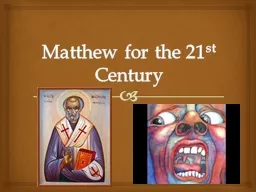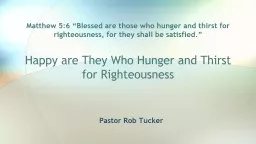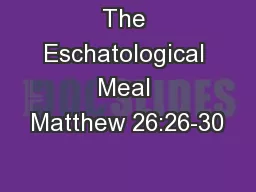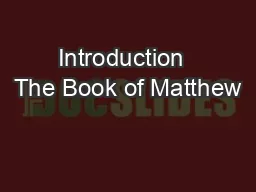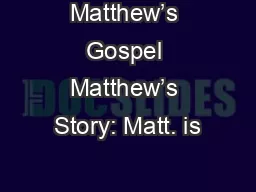PPT-Matthew for the 21
Author : giovanna-bartolotta | Published Date : 2016-05-29
st Century An applied Hermeneutics of Resonance For the Lectionary Year B 2014 Fidon Mwombeki Trust Analogy A view from somewhere The hermeneutic contrary to some
Presentation Embed Code
Download Presentation
Download Presentation The PPT/PDF document "Matthew for the 21" is the property of its rightful owner. Permission is granted to download and print the materials on this website for personal, non-commercial use only, and to display it on your personal computer provided you do not modify the materials and that you retain all copyright notices contained in the materials. By downloading content from our website, you accept the terms of this agreement.
Matthew for the 21: Transcript
Download Rules Of Document
"Matthew for the 21"The content belongs to its owner. You may download and print it for personal use, without modification, and keep all copyright notices. By downloading, you agree to these terms.
Related Documents

